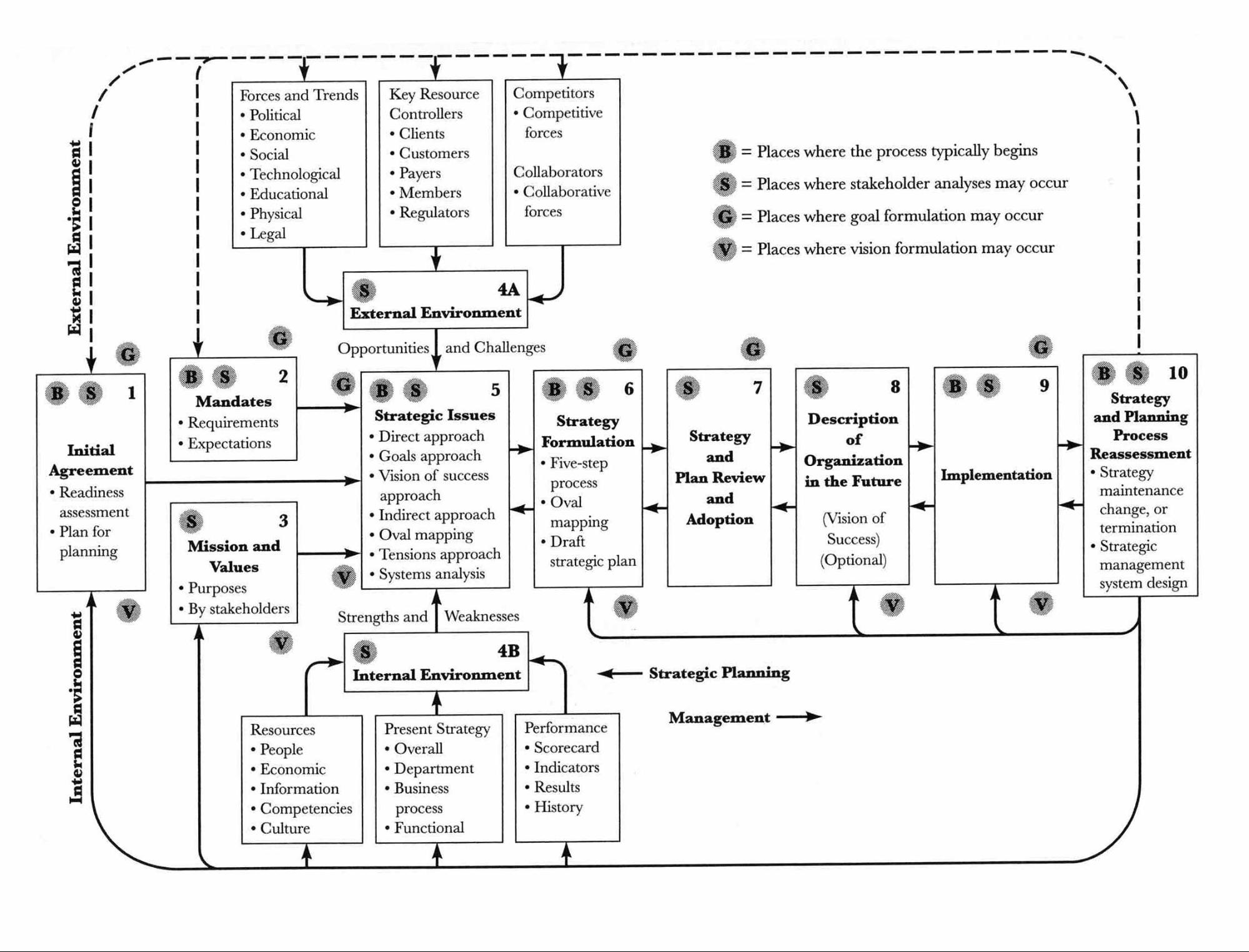Main Content
Lesson 2: Dynamics of Strategic Planning and Strategy Change Cycle
Key Concepts From the Readings
The Strategy Change Cycle
An organization must adapt its strategy over time by identifying new opportunities, offering new value-adding activities, and aligning its behavior with societal and ethical norms. In Chapter 2 of the textbook, Bryson (2011) outlines the Strategy Change Cycle, which identifies things that the effective strategic plan will do (adapted from pp. 41–42):
- be concerned with identifying and responding to the most fundamental issues facing an organization;
- address the subjective question of purpose and the often competing values that influence mission and strategies;
- emphasize the importance of external trends and forces as they are likely to affect the organization and its mission;
- attempt to be politically realistic by taking into account the concerns and preferences of internal, and especially external, stakeholders;
- rely heavily on the active involvement of senior-level managers, and sometimes elected officials, assisted by staff support where needed;
- require the candid confrontation of critical issues by key participants in order to build commitment to plans;
- be action oriented and stress the importance of developing plans for implementing strategies; and
- focus on implementing decisions now in order to position the organization favorably for the future.
Bryson defines the Strategy Change Cycle as
a process strategy, processual model of decision making, activity-based view of strategy, or just an approach to identify and respond to challenges in which a leadership group manages the main activities in the process and often leaves much of the content of the responses and implementation methods to others. (2011, pp. 43-44)
The Strategy Change Cycle is presented in Figure 2.1 below and on page 39 of the textbook. As you look at the figure, don’t be overwhelmed; you won’t be required to understand the entire process, which is certainly complicated. You’ll learn about each of the steps involved in the cycle in more detail throughout the semester.

A Ten-Step Strategic Planning Process
The Cycle is intended to help organizations do the following things (adapted from Bryson, 2011, p. 43):
- organize effective participation;
- create meritorious ideas for mission, goals, strategies, actions, and other strategic interventions;
- build the winning coalition needed to adopt and protect strategies during implementation;
- provide needed guidance and resources for implementation; and
- build competence and knowledge to sustain implementation and engage in the next round of strategic planning.
Page 46 of Bryson’s textbook (2011) lists the ten steps of the Strategy Change Cycle:
- Initiate and agree on a strategic planning process.
- Identify organizational mandates.
- Clarify organizational mission and values.
- Assess the external and internal environments to identify strengths, weaknesses, opportunities, and threats.
- Identify the strategic issues facing the organization.
- Formulate strategies to manage the issues.
- Review and adopt the strategic plan or plans.
- Establish an effective organizational vision.
- Develop an effective implementation process.
- Reassess strategies and the strategic planning process.
Adjusting the Strategy Change Cycle
To effectively address the infinitely varying nature of organizational situations, you’ll have to adapt the process outlined in the Strategy Change Cycle—though it’s important to point out that it’s only the steps in the process you’d be changing, not the strategic plan itself. The Cycle illustrates the way strategic planning acts as a response to challenges; as such, it’s more of an idealized conceptual process, an approach to reference as your situation changes. Think of the Cycle as a model for how to begin strategic planning, for what to do next, and for how to adapt to unexpected circumstances.
